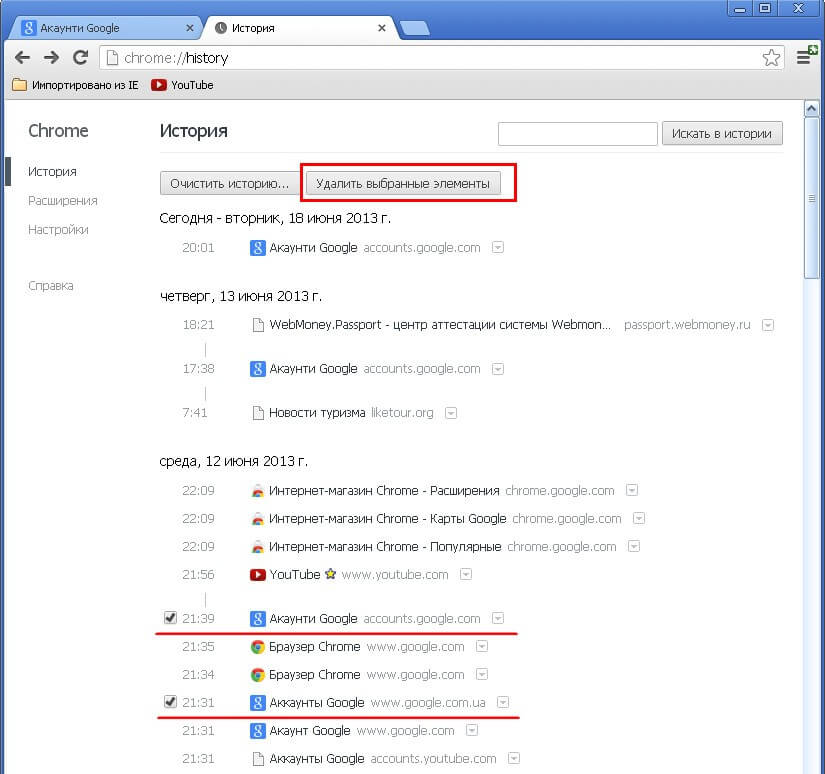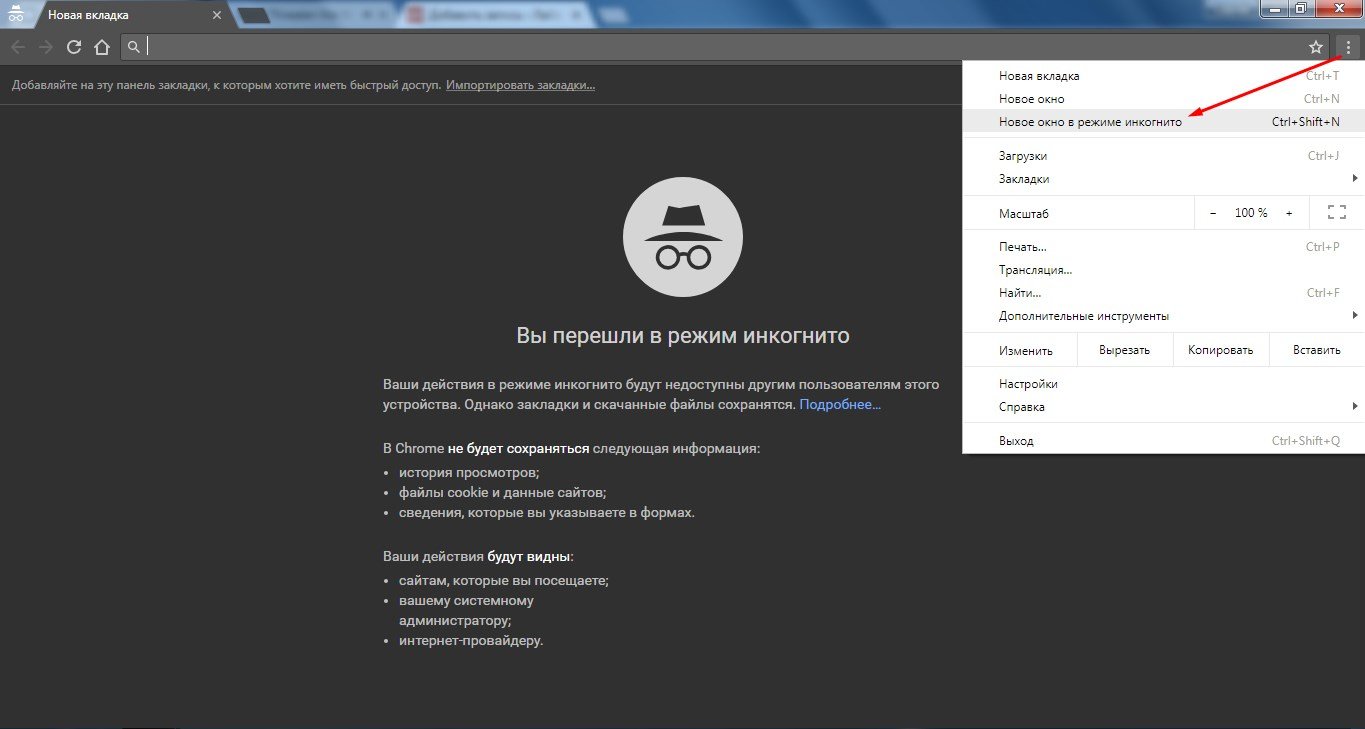All modern browsers are able to track user actions. They cache images, store cookies, record the history of visits to sites to make Internet surfing more convenient. With the help of history, you can quickly find previously visited pages, without even remembering their exact address, but only the general subject or name of the site or date.
But sometimes there are situations when the function of saving history is not needed, for example, when using a public computer. In this case, it will be useful to know how to disable the history.
Is it possible to make sure that Google Chrome does not save history?
In fact, a full-fledged function that would prevent the preservation of the history of visits was not implemented in Google Chrome.
The only mode in which history is not preserved is incognito mode.
However, it is not a complete solution to the problem and complicates the use of some sites, as it completely disables cookies and cache.
Options
What should be done to prevent history from being preserved? You can use third-party solutions in the form of extensions and add-ons that allow you to fully manage your history, including disabling it. Or you can periodically clean it.
History settings
You can't turn off saving history in Google Chrome in your settings. But you can delete it after each use of the browser or with a different frequency.

To do this, you need to:
- Log in to your browser.
- Press Ctrl+H.
- Click the "Clear History" button.
- Select the period to clean.
- Mark the cache, cookies, or deselect if you want to clear only the browsing history itself.
- Confirm action.
The process may take some time, depending on the amount of information accumulated.
You will need to repeat the steps every time there is a need to clear the history.
This is a good way for one-time use, however, on an ongoing basis, other solutions are best suited.
Incognito Mode
In order not to save history, you can try to activate the incognito mode. It was created to increase anonymity in the network. It is also useful if you want to go to a dubious resource (however, the regime will not save you from viruses and advanced surveillance). How to enter incognito mode:
- Open Chrome.
- Enter the menu (three dots in the upper right corner).
- Click on the item "New window in incognito mode".
Also, the entrance to this mode is carried out by pressing the combination Ctrl + Shift + N. In any case, a new window will open. The interface will be painted black for recognizability, and the place of the profile and extensions will be taken by the icon of the incognito mode, by clicking on which you can exit it.
The mode does not give complete anonymity. The browser in it ceases to save the history of visits, requests, cookies, cache, as well as data entered into forms (logins, passwords, credit card numbers or other personal information). However, the user's actions will still be visible to the provider, system administrator, as well as some sites. Due to the disabling of cookies, some functions of the sites may begin to work incorrectly.
When the incognito mode is activated, the extensions stop working, which will be inconvenient for users of the adblock due to the sharply increased number of ads.

Because of this, it is worth trying out the fastest, safest and most convenient way.
Using extensions
You can disable the saving of history in Google Chrome using special extensions. Over the years since the release of the browser, there will be a lot of such.
A great example would be prettygraphic's No History extension. It allows you to turn off history tracking with a single click at any time, without having to go into incognito mode, which is very convenient.
There is also an option from the developer of KVSoftware. Its extension automatically cleans up your browsing history and keeps it blank by constantly deleting new entries. And the user is only required to install and forget, no other actions are needed.
It is worth highlighting the following extensions:
- History Cleaner (History Eraser);
- Auto History Wipe;
- Shhh – history blocker;
- SingleClick Cleaner.
Each of these extensions is able to delete the history with one click, or at startup, not allowing junk files to accumulate beyond measure.
To install the extensions, you'll need:
- Log in to your browser.
- Follow the link — https://chrome.google.com/webstore/category/extensions.
- Search for the name of the extension.
- Click on it and click on the "Install" button.
After that, it will be installed. Next, you'll need to configure it and optionally pin it to the Quick Access Toolbar for easier setup.

How to enable history saving
The specific option depends on the way in which it was turned off. If you used an extension, you'll need to remove it. To do this, you need:
- Log in to your browser.
- Enter a link in the address bar – chrome://extensions/.
- Select the desired extension and click "Remove" or disable (move the blue slider to a gray position).
- Confirm action.
In the case of incognito mode, you need to click on the icon to the right of the address bar and click on "Exit incognito mode" to return the browser to its normal state.
If the history was deleted by standard means, nothing needs to be done – it will not be possible to restore it.







